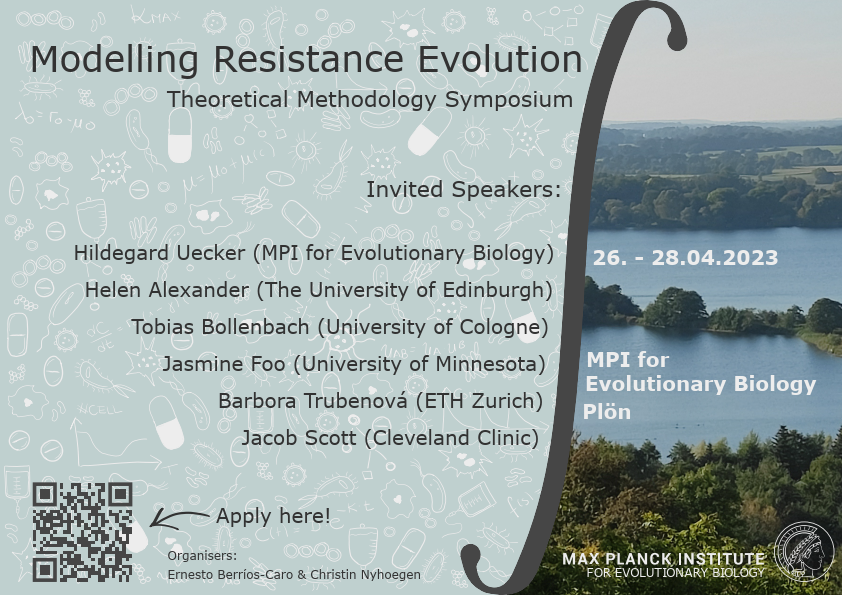Speaker
Description
To alleviate the threat of antimicrobial resistance (AMR), innovative treatment strategies are urgently needed. The phenomenon of collateral sensitivity (CS) may be exploited to achieve this goal using existing antibiotics. CS occurs when resistance to one antibiotic increases the sensitivity to another antibiotic. CS-based combination treatments could potentially suppress resistance, but it remains unclear how to design such treatments. To this end, we use a model-based approach to assess the potential of CS-based treatments to suppress AMR, integrating pharmacokinetics-pharmacodynamics (PK-PD) and principles of evolutionary dynamics. A modelling framework was developed including components accounting for antibiotic PK-PD and population dynamics of bacterial growth and evolution of resistance. Bacterial population dynamics was described using a four-state stochastic hybrid ordinary differential equation model, where each state represents a bacterial subpopulation, including a wild type (WT) population, two single mutant subpopulations, and a double mutant subpopulation. Resistance evolution was modelled according to a stochastic process based on a binomial distribution informed by a mutation rate. Each subpopulation had unique antibiotic sensitivity based on the minimum inhibitory concentration (MIC). Antibiotic sensitivities were incorporated in sigmoidal concentration-effect relationships. The framework was implemented using the RxODE package in R. We used the framework to systematically study how certain pathogen- and drug-specific parameters influence AMR evolution. We simulated different combination dosing regimens with sequential, cyclic, or simultaneous administration using two antibiotics, ABA and ABB, which were assumed to have identical PK and additive bacterial killing effects. Here, in the bacterial model, the two single mutant subpopulations represent resistance to ABA and ABB, respectively, while the double mutant subpopulation was resistant to both ABA and ABB. To understand how antibiotic with different types of PD impact AMR evolution we performed simulations varying the drug-specific parameters relating to the maximal effect and shape of the concentration-effect relationship. We studied the importance of CS reciprocity, effect magnitude, and how pathogen-specific factors including fitness cost and mutation rate, influence the ability of CS to suppress the resistance for different dosing regimens. We find that the impact of reciprocal CS relationships on the probability of resistance at end of treatment is dependent on the drug PD type and dosing regimen. Simultaneous or one-day cycling treatment schedules were most effective dosing regimens to suppress resistance. For these treatments, a CS effect of 50% fully suppressed the resistance when concentration-dependent antibiotics were used. The effect of antibiotic concentration shows that CS-based treatments are most clinically relevant for antibiotics with a narrow therapeutic window. One-directional CS relationships, and not only reciprocal relationships, can be utilized in the design of CS-based treatment schedules. In this analysis, we used modelling and simulation to systematically unravel drug- and pathogen-specific factors influencing optimal design of resistance-pressing CS-based treatment strategies. Our modelling approach addresses important open questions around the topic of CS that are not easily tested experimentally, and provides new insights regarding key design aspects of CS-based treatments, contributing to the unmet need toward innovative strategies to alleviate the threat of AMR.

